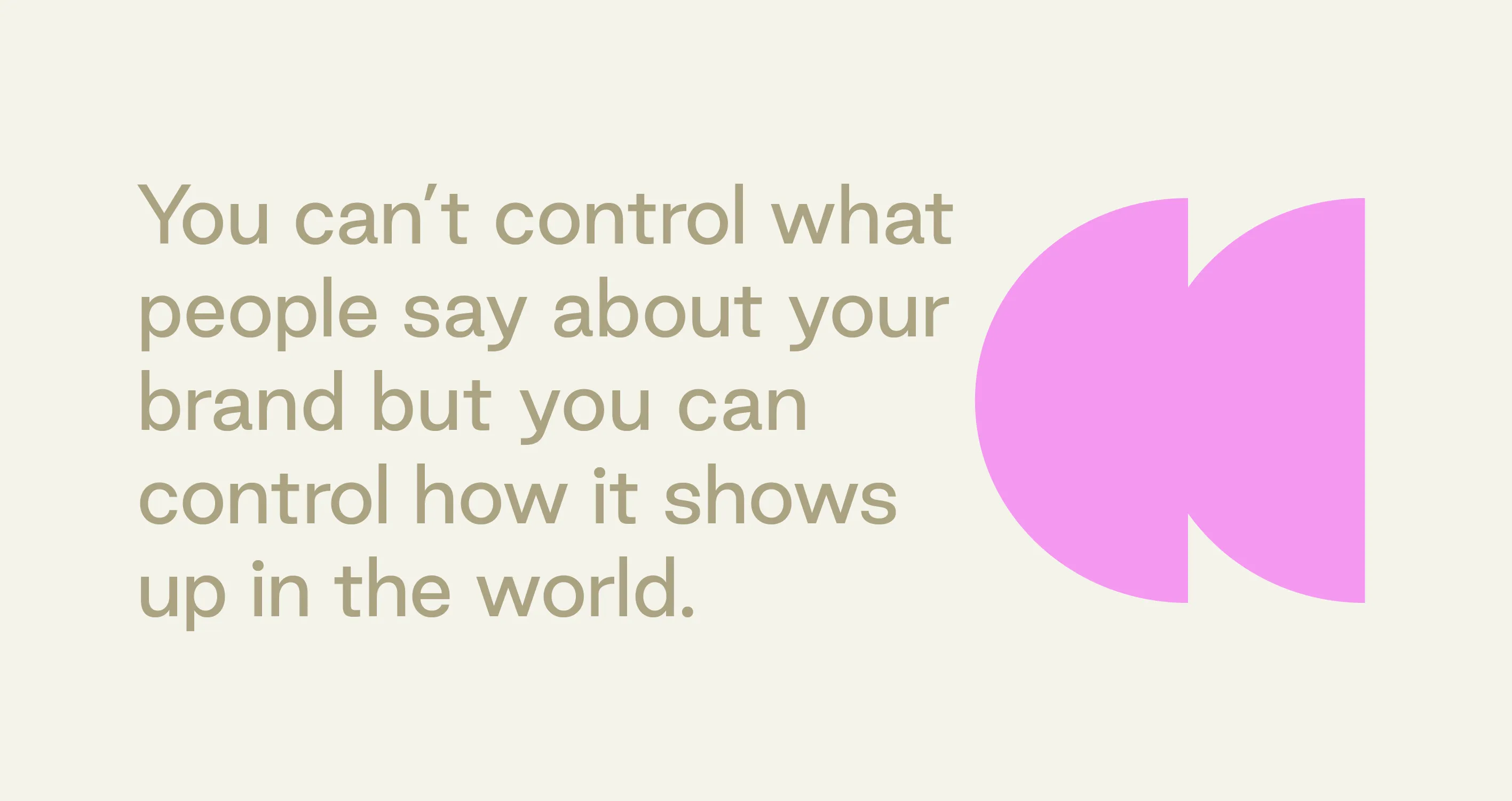Building a strong brand doesn’t happen overnight or by chance.
It doesn’t happen by hitting this week’s sales targets. Not through bombarding advertising. It certainly doesn’t happen by plastering your logo everywhere and anywhere.
It requires a clear strategy, consistent execution and a deep understanding of your business’s foundation. A strong brand is one that shows up consistently and clearly. In doing so, it’s memorable—allowing the world to connect with it.
A robust business strategy isn’t enough to carve out a strong brand. Alignment with your business goals and research will help you fine-tune your brand. Once it’s in the world, it needs to crop up in ways that truly reflects itself and the essence of your business.
It’s easy for companies to stumble in the day-to-day execution of the brand. Too often, we see companies chasing trends, cutting corners or making quick reactive decisions, hoping something will stick.
So, to make a successful brand from conception to implementation, it depends on some essential elements:
- A Robust Brand Identity: Your visual and verbal identity defines how your brand looks, feels, and sounds. It’s the foundation for everything else.
- Messaging That Resonates: Your words (even the ones unspoken) should reflect your values, speak to your audience and clearly communicate what sets you apart.
- Brand Guidelines: Clear guidelines (like a playbook) ensure everyone on your team knows how to represent the brand. No guesswork, just clarity and consistency.
- A Strong Digital Presence: Your website, social media and digital marketing should reflect your brand as clearly as your storefront or packaging.
Design is strategy.
A strong brand isn’t just about looking different for the sake of it—it’s about showing up, visually and verbally, in a way that authentically reflects your company.
It starts with truly understanding your business. The purpose, mission, vision, values, competitive edge and the problems it solves. Not to mention, the audience you serve and those vital messages.
Identifying your core communication challenge should be at the start of this process. Design should then be built around solving that challenge—where every brand asset is strategically aligned to your goals, no matter how big or small.
It’s important to remember here, that design is more than aesthetics—it’s a business tool. When done right, it effortlessly connects messaging, functionality and experience in the consumers’ brain.
In fact, Adobe reports that
46% of people won’t purchase from a brand with a poorly designed website or mobile experience, and 50% judge a business by its design quality.
It’s this consistency and quality that builds trust. Not to mention, recognition and the ability to recall your brand.
Imagine a brand whose logo and colours look different on their website than on Instagram. Who uses a crazy, fun font to advertise something sombre. Or whose packaging tone doesn’t match their online voice. That kind of inconsistency creates confusion which completely erodes trust.
The most powerful brands show up the same way across every touchpoint—online, offline and everywhere in between. That consistency builds recognition and recognition builds trust.
Consistency helps build:
- Recognition – You’re instantly identifiable.
- Credibility – A cohesive look and feel allows you to appear more polished and trustworthy.
- Connection – A unified brand experience builds emotional ties and long-term loyalty.
82% of consumers are more likely to click on familiar brands(1) and 71% are more likely to buy again from brands they trust(2).
Ultimately, branding is the sum of every experience people have with your business. Not just a logo. Not just a tagline.
Whether you like it or not, every company already has a brand and a reputation. The question is: are you shaping yours intentionally?
Great brands are built on truth: this starts with data and insights that inform your messaging. By narrowing down what you might want to highlight across your brand, you get a great baseline of how your brand can show up.
For starters, your visual identity (colours, typography, imagery) should align with your tone and values and it should look the same across all your touch points. When your audience registers this as authentic and appropriate (even subconsciously) they take notice.
Successful branding isn’t possible without knowing your audience and knowing them well. Throwing out random designs or content (of any shape and kind) and hoping something sticks won’t cut it.
A well-crafted online presence is now a baseline expectation and a well-designed, user-friendly website is a given if you want your audience to continue building a good understanding of your offering.
Working with a branding studio can help bring clarity and direction to building (and maintaining) your brand. The right partner brings expertise, tools and an outside perspective, ensuring your brand is implemented thoughtfully, strategically and consistently. This is vital in the start-up phase where brands are unknown and you’ve got a fresh, blank page.
A well-crafted approach doesn’t just establish your presence in the market—it plays an active role in driving both leads and long-term revenue through several core channels. In fact, recognising that branding is the first, widest-sweeping step of the lead generation funnel is crucial to keep in mind.
As Seth Godin once said:
“A brand is the set of expectations, memories, stories, and relationships that, taken together, account for a consumer’s decision to choose one product or service over another.”
And Jeff Bezos summed it up perfectly as well:
“Your brand is what people say about you when you're not in the room.”
You can’t control what people say about your brand but you can control how it shows up in the world.
This curated consistency builds trust. Trust builds loyalty. And loyalty drives growth.
When there are so many options out there, a great brand is what helps you stand out and stay in people’s minds.
If you’re looking to grow your business and stay competitive, good branding isn’t just a nice to have—it’s a must.



